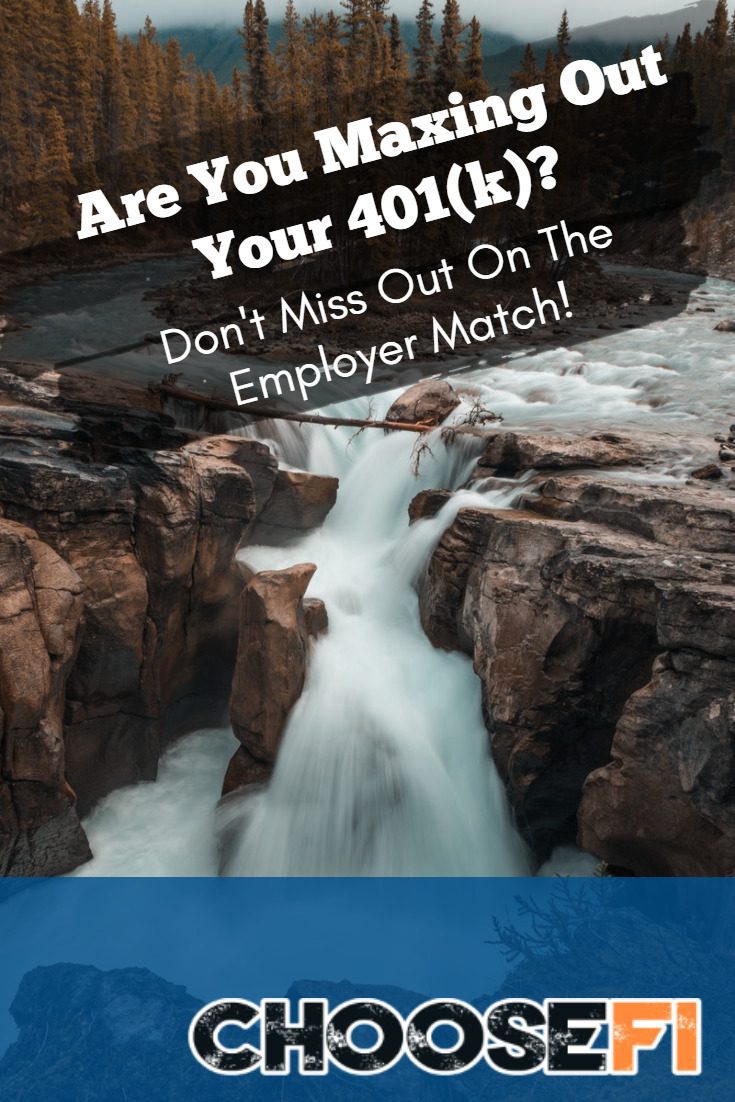One very easy way to put an extra few percent toward your savings rate is earning a retirement savings match from your employer. Every additional percent of your income and your employer’s match that you put away puts you a few months–or maybe even years–closer to Financial Independence. So make sure you have an employer match.
To get the most out of your 401(K), it’s super important that you’re aware of what options are available to you and how they work. If you aren’t, you could inadvertantly be missing out on essentially free money. Learning to max out your 401(K) isn’t hard. You just need to do your research to learn what type of plans are available to you (and which is best for your circumstances), how a few rules could potentially end up cheating you out of your money, and why rechecking your contributions every year is so important.
Whether you have access to a plan now or may have access to a plan in the future, here are a few things you definitely need to watch out for to make sure you get every penny of retirement matching funds that you can.
Table of Contents
- Retirement Savings Plan Matching Rules Can Be Tricky
- Confusing Matching Formulas
- Maxing Out Early in the Year Could Cost You
- Vesting Schedules Mean You Don’t Always Earn Your Match Dollars
- End of Year Match Contributions Could Result In No Match The Year You Leave Your Job
- Not All Employers Match Catch-Up Contributions
- Recheck Your Contributions Annually
- Final Thoughts
Employer Match Retirement Savings Plan Rules Can Be Tricky
If your employer offers a retirement savings plan at work such as a 401(k), 403(b), 457, Thrift Saving Plan, or another plan, you may be eligible for a retirement savings plan matching contribution to help you get to FI faster. Of course, not all workplaces have retirement savings plans and even those that do don’t always match.
In an ideal world, all retirement savings plans would be super straight forward. The matching formulas would be intuitive and companies would do the right thing and honor the match no matter how you contribute your money. Unfortunately, confusing rules could be costing you some of your retirement savings plan matching dollars.
Below are some things that you should look out for as you start your research on what your company offers. You may also want to make an appointment to sit down with your job’s benefits or human resources to ask them to explain everything to you.
Related: 403(B) Vs. 401(K)–Which One Is Best For You?
Confusing Employer Matching Formulas
If you’re just getting started contributing to your workplace retirement plan, you may not be able to max out your benefits. Even so, getting the employer match is a great way to get started when you have high-interest rate debt that still needs to be paid off.
Unfortunately, matching formulas aren’t always as easy as matching dollar for dollar on the first 5% of your salary. Some employers have confusing formulas like matching 50 cents on the dollar for the first 5% you contribute and 25 cents on the dollar for the next 10% you contribute.
In total, you’d receive a 5% matching contribution from your employer, but in order to get that 5%, you’d actually have to contribute 15% of your salary. No matter what your employer’s matching formula is, make sure you understand how much you have to contribute in order to get the full employer match.
Maxing Out Early In The Year Could Cost You
Some employers contribute the employer match dollars each paycheck, which is great. But you need to know that if you max your retirement account out early in the year, instead of contributing equally throughout the year, you may not get the full employer match. Instead, you may only get the employer match each pay period where you had a retirement contribution and miss out on the employer match in those pay periods where you couldn’t contribute anymore because you had already maxed out for the year.
Thankfully, some companies realize this is crazy and make a true-up contribution at the end of the year to give you the full employer match, but not all companies do. Make sure you either spread your contributions out throughout the year to get the full employer match or make sure your company will give you a true-up contribution. You don’t want to miss out on free retirement matching dollars.
Vesting Schedules Mean You Don’t Always Earn Your Employer Match Dollars
If you just started a job in the last few years and you’re thinking about leaving for greener pastures, you might be surprised to learn you may not get to take all of your retirement matching dollars with you. Some employers don’t actually give you your employer match dollars right away. While they’re invested just like regular employer match dollars, you only earn the match dollars on a year-by-year basis according to your employer’s vesting schedule.
For instance, some employers allow you to vest 20% per year for five years. At the end of your first year of employment, you’d get to keep 20% of the match dollars you’ve earned, 40% the second year and so on until you earn 100% of the match dollars after year five.
The vesting is retroactive on all match dollars earned, so once you hit year five you get 100% of the previous match contributions and all match contributions going forward. However, if you left after the end of year three, you’d only get to keep 60% of the match dollars contributed to your account to that point.
End of Year Match Contributions Could Result In No Match The Year You Leave Your Job
Not all employers match your retirement contributions each pay period. Instead, some choose to deposit match dollars into your retirement account once per year. For these employers, many require you to be an active employee as of a certain date, such as December 31st, to earn the match for the year. If you leave your job on November 30th, you wouldn’t get a penny of employer match dollars for the year even though you were an active employee contributing for 11 months.
Not All Employers Match Catch-Up Contributions
People age 50 and older can contribute extra money in most workplace retirement plans. The extra money is called catch-up contributions. The catch with these types of contributions is that not all employers will match them. This is another scenario when maxing out the regular portion of your workplace retirement plan early in the year could hurt you. Make sure to check with your plan to see how catch-up contribution matching would work. Then figure out a way to get that match so you can max out your catch-up contribution too.
Related: My Late Journey To FI
Recheck Your Contributions Annually
Once you’ve done everything to get your employer match set up, the key part is not to just forget about it. You should check in once every year to make sure the rules for your plan haven’t changed. At that time, ask questions to make sure you’ll still get the full employer match. If the retirement plan contribution limits have increased for your plan, you should then increase your contributions to continue maxing out your retirement account.
Related: Your End Of Year Investing Checklist
Final Thoughts
While contributing to a workplace retirement plan should be easy enough that anyone could understand it, many plans have complicated rules when it comes to the employer match. It’s your responsibility to understand all the ins and outs of your plan’s employer match to make sure you don’t miss out on anything. If you don’t understand something, ask your company rep. Who knows? A few minutes with that person and a few key answers might end up saving you a lot of money!
Related Articles
- Podcast Episode: Solo 401K Vs SEP With Waffles On Wednesday
- Retirement Plans For The Self Employed: SEP IRA Vs Solo 401K




